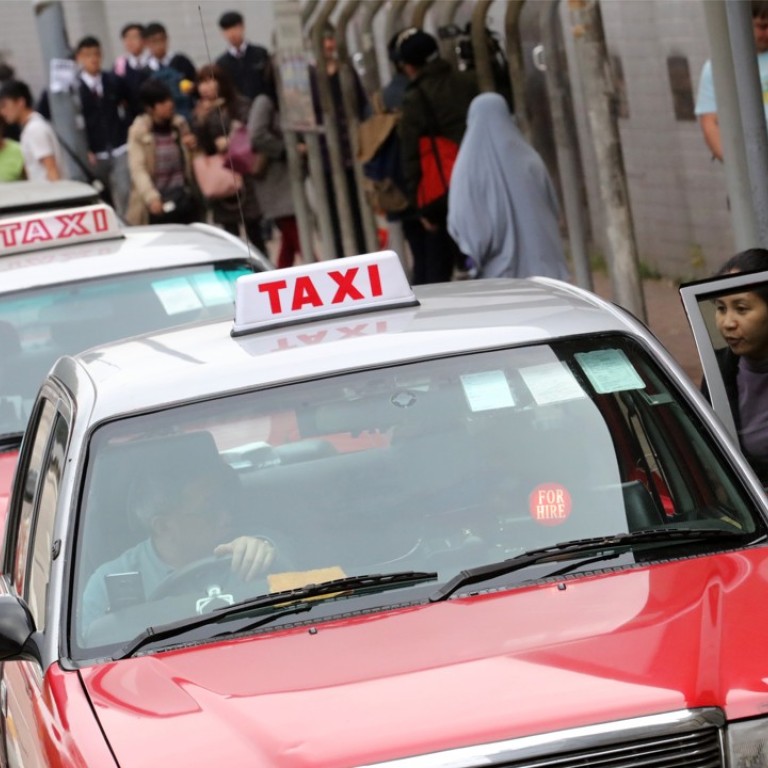
As Octopus challenges WeChat Pay and Alipay, will the battle for Hong Kong taxis break new ground in a cash-reliant trade?
Payment giants from the city and mainland China are vying for influence. But there are still stumbling blocks on the way to industry-wide acceptance
Hong Kong’s taxi drivers have often been accused of refusing to move with the times and embrace electronic payments as an alternative to cash.
But from the end of last year, mainland e-payment operators WeChat Pay and Alipay began to crack the market, with QR code-based payments that have proved successful in mainland China. The battle for market supremacy hotted up when Hong Kong’s Octopus – makers of the city’s near-ubiquitous stored-value travel card – started using QR codes too, hoping to win over cabbies attracted by the cards’ popularity.
How can you pay Hong Kong taxi fares?
Until the end of last year, the only way to pay taxi fares in Hong Kong was cash, unless you used a taxi-hailing app and the driver was signed up to it. But things are changing. Now WeChat Pay, Alipay and Octopus are all vying to sign up as many local cabbies as they can. And taxi-hailing mobile apps such as HK Taxi, Didi Hong Kong and SynCab let passengers pay by credit card.
New app allows passengers to pay their cab fare with Octopus card
How receptive are local taxi drivers to these e-payment methods?
Not very. Passengers still mostly have to reach for their wallets instead of smartphones to settle cab fares. More than 1,000 taxis had signed up for WeChat Pay HK by December while more than 1,500 had chosen Alipay, according to the two companies. Earlier this month Octopus said more than 1,000 drivers had signed up to its app. But even taken together, those figures are a fraction of the city’s 18,163 taxis.
Alipay is a unit of Ant Financial Services Group, an affiliate of Alibaba Group Holding, which owns the South China Morning Post.

Why are Hong Kong cabbies reluctant to accept e-payments?
Firstly, the city’s ageing taxi drivers are not as tech-savvy as their passengers. The average age of Hong Kong’s registered taxi drivers is 58, according to Taxi 2020, a blueprint report published by the Legislative Council last year. Long working hours and low wages have failed to attract young drivers to join the industry, which is consequently shrinking, the report said.
What’s holding Hong Kong back from becoming a smarter city?
Hong Kong cabbies earn about HK$10,000 (US$1,300) to HK$15,000 per month for working 10 hours per day six days per week, said Gung Cheuk-leung, a Hong Kong Island taxi driver. He had not set up any e-payment options because he did not know how to.
And the electronic payment record is of concern to many drivers, who work while claiming government welfare payments intended for people whose income does not cover their outgoings. Records of a higher-than-declared income could mean an end of their payments. One New Territories taxi driver, who preferred not to be named, said he was worried that the records would affect his eligibility.
Octopus tries to get Hong Kong taxis on board with card reader app
Taxi drivers need to pay monthly or daily rent to the licence plate owner. A Hong Kong Island taxi plate can cost HK$500 or more per day, one taxi plate company said.

Which e-payment options are the most convenient and inconvenient for drivers and passengers?
Mobile taxi-hailing apps HK Taxi, SynCab and Didi HK all allow credit card payments. Users pay by hitting a button on their phone before getting out of the car.
Didi gets on board with cashless taxi payments in Hong Kong
Passengers who hail taxis on the street can scan a QR code more easily than taking out an Octopus card and tapping it on the driver’s phone. Battling that relative inconvenience was one of the reasons Octopus added QR codes to its system earlier this year.

